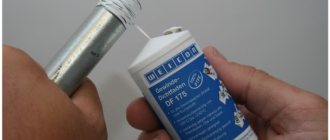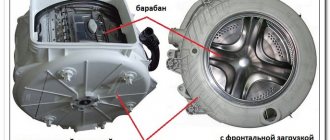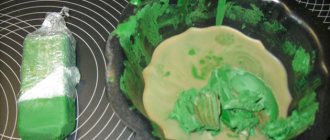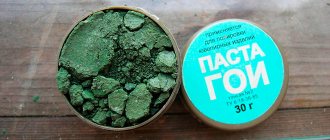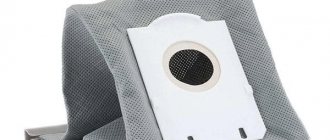How to wind flax on a pipe with your own hands: step-by-step instructions + Photo.
In everyday life, it is very often necessary to carry out small repair work, during which it is necessary to use flax for winding pipes. This may be required for a radiator or plumbing. Every master should be able to use tow correctly, as sooner or later he will need it. Water pipes can be made of plastic, metal, nylon or metal-plastic. Each type of material has its own adapters in order to connect to other pipes. We will talk about such connections.
What is sanitary flax made from?
Plumbing flax is a fiber obtained from the stem of flax, hemp , and other bast crops. The plants from which the seal is made only affect the color of the tow, but not the quality. Color can vary from pale gray to various shades of brown. Despite the different plants for the production of tow, the name of the material does not change; it is still plumbing flax. At its core, it is waste from the primary processing of these crops.
Advantages of sanitary flax
- Low price .
- Equally effective for any diameter .
- Equally effective for connections made of almost any material (aluminum fittings and fittings for metal-plastic require increased care due to the fragility of the materials).
- Can be used when installing heating systems .
- It is possible to adjust (loosen the connection) by 180° without the risk of leakage.
- It is environmentally friendly product.
- Plumbing linen is able to expand upon contact with water, filling more tightly the space between the parts.
- Vibration resistant.
- Resistant to temperature changes.
- Can be used for hot and cold, for indoor and outdoor water supply, drinking water supply is no exception.
- Used for sealing gas pipelines.
Disadvantages of sanitary flax
- Working with plumbing flax requires a certain skill.
- Useless without plumbing paste.
- During work, your hands and surfaces get dirty with plumbing paste.
- Prone to rotting.
Pros and cons of using
The main advantage of choosing tape is its availability. FUM is sold at a low price, cheaper than flax tow and most other sealants used in plumbing.
The material is characterized by ease of installation. With proper skill, winding the tape occurs in a matter of seconds, but for this you should practice winding it on connections of different diameters for some time.
An important advantage of using tape is that the parts fastened with it can be easily disassembled. The connections do not freeze tightly; they can be disassembled even years after installation.
The main disadvantage of the material is that it is not the most reliable of seals, therefore, as a rule, it is not used for industrial installation. However, for household repairs the hermetic properties of FUM are quite sufficient.
Another disadvantage is that the tape often protrudes outward from the joints, so the pipes may look sloppy because of this.
Tape on thread Source sdelairukami.ru
Characteristics of sanitary flax
- Use temperature up to 140 °C.
- A good quality seal has no rotten smell.
- Humidity should be no more than 12% (it should feel dry to the touch).
- Available in the form of braids, coils or bobbins.
- Under certain conditions, withstands pressure up to 16 atm ( see below Insoluble sanitary paste).
Plumbing flax differs from each other in the content of the flax , it is combed and torn flax (the flax is the waste that remains after primary processing, essentially garbage). The amount of fire content in the compactor is indicated by numbers from 8 to 24. The higher the numerical value, the lower the fire content in the material.
Combed sanitary flax
These are purified, thin and long fibers intended for sealing gas and water pipes. Thin and long fibers tightly fill the threads, thereby making the connection reliable. Well suited for gas lines and thin threads.
Frayed sanitary linen
Torn flax is the raw material for the production of combed flax. For torn flax, a large amount of fire is the norm. For this reason, torn flax is best used for large diameter cast iron joints.
Product marking
The technical regulations define three markings for fluoroplastic sealants.
The remaining products are subtypes of the main names:
- FUM-1.
It is used as a sealant in general pipelines, in systems working with aggressive chemicals (calgon analogues for washing machines are written about in this article). Added lubricant to the composition – 20% petroleum jelly; - FUM-2. The material is used in pipelines containing substances with strong oxidizing properties. Lubricant is not included;
- FUM-3. Tape is used in communications with neutral media. Available without lubrication.
IMPORTANT! The material is destroyed at temperatures above 520 degrees. Doesn't burn, doesn't explode
Manufacturers guarantee shelf life within 10-13 years.
How to properly wind plumbing linen
This is what the finished thread should look like.
- The first step is to determine the direction of the thread , left or right thread. The right one is the one that twists clockwise.
- If there are no notches on the threads , carefully, so as not to damage the threads, make notches using a needle file , an adjustable wrench, or any metal object. This is necessary so that when screwing the thread, the tow does not rotate with the fitting, but holds on to the notches.
- Apply a thin layer ; many plumbers do not do this, but this procedure will not be superfluous.
- From the total volume of the seal, it is necessary to separate an even , non-tangled strand , about 30-35 cm long for threads with a diameter of up to one inch. The excess can then be cut off with a knife.
- Plumbing linen must be wound in one single strand .
- The flax strand must be straightened to form something like a ribbon 2-3 mm wide.
- Press one end of the strand at the base of the thread with your finger
- Wind in the direction of the thread , i.e. clockwise for right-hand threads.
- The linen strand should be laid tightly , turn to turn.
- If necessary, go over the entire thread surface one more time.
- The thread must be completely covered with plumbing linen.
- At the end of winding, the entire surface of the thread should be rolled between your fingers to tighten the flax.
- Treat with a thin layer of plumbing paste.
How to wind plumbing flax (video)
Preparatory stage
Before winding flax or tow on the thread, you need to prepare the joint surface and determine the required amount of tow. Screw the fitting onto the thread as is, without wrapping anything. This will help determine how much tow you will need to take.
If the thread is smooth and even (in the case of factory threading, most likely this will be the case), it is recommended to apply notches on the threads for better adhesion. For this, a water wrench, a triangular socket or regular pliers are suitable; all you need to do is apply notches across the thread, without being too zealous. This is done in order to prevent the tow from sliding along the threads.
The notches should not be too deep; you do not need to literally pierce the metal (watch the video). The reliability of the connection in the future will depend on how the tow is wound correctly. If you put too little and rarely, it will leak, but too much can be much more dangerous - a wound area that is wrapped too tightly can burst when the temperature rises (as you know, metal expands when heated).
How can you lubricate plumbing linen?
Before the advent of plumbing paste, red lead paint mixed with drying oil, oil paint, and silicone were used. Many people still use this method of compaction to this day. However, these methods have significant drawbacks.
Plumbing linen and paint
Advantage:
- The connection is sealed efficiently.
- Protects threads from corrosion.
Flaws:
- After the paint has dried, it is extremely difficult to disassemble such a connection.
- Very dirty work and not neat appearance of the connection.
Plumbing linen and silicone
Advantage
- Available material.
- High-quality seals the connection.
- Allows you to adjust the connection.
Flaws
- Due to the presence of acetic acid in its composition (a strong smell of vinegar appears during operation), it is not permissible to use it on metal pipes, since acetic acid causes metal corrosion.
General information
Since every home craftsman has at least once encountered the problem of winding flax onto a tap thread, you should learn how to do this. If you want to hermetically connect each element of the water supply and pipes, then you should perform packing. To do this, two pipes must be packed at an angle of 90 degrees using a coupling, and there must be a thread at the end of each pipe. The coupling will have internal threads as well as external threads. Twisting alone is not enough, so for the best connection, sealing should be done.
Description of flax (tow)
Before you start winding flax onto pipes, you should become more familiar with what flax tow is. This is a fibrous type material that is used to seal threads. The product is natural, it is made from the primary processing of homogeneous, thin and long-fiber flax. The scope of application of the material is wide. Depending on the manufacturing method, the material can be tape, jute, plumbing or construction. In our case, we will talk about insulation, which makes it possible to reliably seal each connection.
To make this material, combed fibers are used, which are brought in bales. They are used for construction work when sealing seams, insulating a log house and laying wood elements. The material is natural, and this is especially valuable among those people who are building a wooden house. If rolled material was used to connect pipes with flax, then it can be called tape. This material is also used to caulk seams in log houses and lay crowns. The advantage of using flax is the cost, since the material for plumbing work is several times cheaper than other analogues. In addition, it is economically consumed, and the fibers, although thin, are very strong. If they are wound correctly, they can be used for various types of work where any type of connection will be used. Can be used for cast iron and ceramic pipes.
Advantages
Before you start wrapping flax on the thread, you should know that it begins to swell and absorb moisture, which allows you to increase the level of tightness, since there will be no way for leakage. In addition, the material has high mechanical stability, and it is this characteristic that makes it possible to adjust plumbing fixtures, and the hermetic properties will not be lost; connections can be unscrewed by half a turn or a full turn.
Disadvantages of use
If you are thinking about how to wind flax on a thread, you should first become familiar with all the shortcomings of the material. So, the material is based on a substance of organic origin, and therefore it can begin to rot when exposed to moisture and air. Also, it sometimes gets inside even during a routine examination. To do this, when using tow, you should also use another material, additional, which will help prevent the rotting process. This can be sealing paste, oil paints, solid oil or lithol.
Sometimes, before winding, you should first prepare the thread, since if you lay the material in a large layer, then there is a possibility of damage to the joints, and this is especially true for bronze and brass. If you are faced with the question of how to wind tow on a threaded connection, then you should remember that such a seal requires knowledge of the rules of winding.
Additional materials in combination with tow will make further disassembly difficult, and this applies to oil paint and silicone. Sometimes such additions make the installation process completely unbearable. It is not suitable to use flax when the temperature reaches +90 degrees. In such places, the material begins to weld, and then completely loses its sealing properties. If you are dealing with steel, then you should definitely follow the winding technology, as otherwise the thread may be subject to corrosion.
Plumbing paste for flax
Plumbing flax is practically ineffective without sanitary paste . The paste can be water-soluble or insoluble, gray or dark green in color.
- Protects threaded connections from corrosion.
- Extends the service life of sanitary tow.
- Due to its lubricating properties, it ensures tighter screwing of fittings.
- Over time, the connection does not stick, which makes it possible to easily dismantle the plumbing unit.
- Has a long shelf life.
Insoluble sanitary paste
Insoluble paste can be used even with low system pressure, in cases where it is not possible to completely shut off the water supply. In other words, a threaded connection can be inspected using a wet thread under low pressure.
- Operating temperature depending on the manufacturer from - 20°C to + 130°C
- Pressure withstands: For natural gas in gas supply systems and household bottled gas—up to 5 atm, at temperatures from -20°C to +70°C. For heating - up to 5 atm at +130°C. For drinking water -16 atm at temperatures up to 85°C.
- Melting point 180°C
- Ignition temperature 350°C
Soluble sanitary paste
The soluble paste has the following characteristics:
- Temperature maximum 140 °C.
- To work with soluble paste, the working surface of the thread must be dry.
- Operating pressure, depending on the manufacturer, is within 16 atm.
The composition of sanitary paste includes only those components that are not prohibited for use in the food industry, so they can be used, including for drinking water supply.
Paste composition:
- Water.
- Fatty acid.
- Paraffin oils.
- Natural natural minerals and various components.
- Graphite.
- Chalk.
- Talc.
The composition may vary slightly between different manufacturers.
Technical paste for flax
On the market you can find various pastes and mastics for sealing the threads of pipelines transporting oil, gasoline, diesel fuel, and various petroleum products.
All technical characteristics and recommendations for use are indicated on the packaging.
What is tow and how to work with it
Before fum tape appeared on the market, plumbing tow, which was flax fibers, was used to seal threaded connections of pipes. Optimal results were achieved by coating the layer of tow wound on the thread with a small amount of oil paint. Such a connection was difficult to disassemble after several years.
Now sanitary linen in the form of long silky threads is used along with new sealing materials. Only now a layer of sealing paste is applied on top of the winding, ensuring a reliable and durable connection. The paste protects the flax from rotting and makes dismantling easier if necessary.
Flax fibers are long, thin, strong, fit tightly into the grooves of the thread and do not deform when screwed
Plumbing flax or FUM tape
The table shows comparative characteristics of sanitary flax and FUM tape .
Comparative characteristics of sanitary flax and FUM tape.
Using FUM for a gas pipeline
To fasten gas pipeline parts and install gas equipment, you should use only special FUM tape for gas. It must be supplied with a certificate of conformity confirming its suitability for use on gas pipes.
The special film for gas is yellow. It is made wider - up to two centimeters in width.
Yellow FUM tape for gas Source megastroy.com
The use of the material is possible only when sealing can only be achieved using a sealant. In the case of rubber hoses, as well as metal hoses, the sealing function is provided by a special gasket. In this case, the additional seal will not add tightness to the connection, and may even break it, as it will interfere with the tight fit of the gasket.
Plumbing flax or plumbing thread
The table presents comparative characteristics of sanitary flax and sanitary thread.
Comparative characteristics of plumbing flax and sanitary thread.
How to pack squeegees
When the cut is being assembled, is it acceptable to have dry threads/without sealing in any area? Those. if the seal on the lock nut is just an additional seal or is it quite possible. main? In practice, I see that mechanics use a locknut as the main seal.
SergeyE, the only seal on the nut, also in the thread - these are the fantasies of those who have never done it. Because it is impossible to drive the thread back and forth without losing the tightness. As well as the fact that the seal under the nut is sufficient.
Why “back and forth”, why not just “there”? When sealing under the nut, the threads in the coupling are freely washed with water/corrode quickly?
SergeyE, and the pipe corroding is a nightmare
SergeyE, First the nut - on a long thread. Then the coupling - on a long thread. Next, the coupling - is driven to a short thread with winding. The nut is screwed to the coupling with a seal SergeyE, what other options are there?
master.msk wrote: what other options are there?
Your favorite size
We don’t have squeegees, or rather, I’ve never seen them on galvanized steel, but these ones were installed in the distant 70s and still stand.
jekasus, it is clear that there are galvanized fittings. however, the author needs to drive
the picture says that the coupling is driven to a short thread - and nothing is said about winding
and I saw this option: a bend is screwed into a cast-iron corner without winding and sealed with a lock nut (after which the other end of the pipe section is welded)
SergeyE wrote: Ie. if the seal on the lock nut is just an additional seal or is it quite possible. main?
Plumbing flax or anaerobic sealant
The table shows the comparative characteristics of sanitary flax and anaerobic sealant.
Comparative characteristics of sanitary flax and anaerobic sealant.
Advantages and disadvantages over tow
Flax fiber remains one of the widely used materials for sealing joints on threads, but in many cases it is being replaced by FUM tape due to the following advantages:
- Unlike tow, which is saturated with water and requires additional protection (painting, putty), the fluoroplastic strip is waterproof and does not require additional consumables during installation.
- Sealing with fluoroplastic tape is characterized by simplicity and high speed of work.
- It is almost impossible to detect joints using flax fiber that have an aesthetic appearance - tow often protrudes beyond the dimensions of the joints, being located on the surface, has an inaccurate shape and is painted in conspicuous colors. The connection with the FUM is usually hidden under the fittings and is invisible to the eye; if necessary, it can be easily cut off or left on a light plastic pipeline without disturbing the decorative effect.
- Linen is a natural material and, when saturated with moisture, is susceptible to rotting and destruction; fluoroplastic can work in the system for decades without losing its physical and chemical parameters.
- For the reasons given above (painting after winding), the connection with a fluoroplastic insulator, unlike flax tow, is quick-removable - easy to dismantle without further work on cleaning the threads and surfaces of the parts being connected.
- When sealing tow, it is necessary to exert significant physical effort using plumbing wrenches - this can lead to destruction of the surface of fittings, adapter couplings, and union nuts. Due to its plasticity, when using fluoroplastic tapes, the applied forces are much less and allow you to connect parts even by hand.
- The commercial advantages of FUM tape should also be noted - it is easily accessible, it can be purchased at any building materials store or on the market, and the cost is comparable to the price of flax tow.
Rice. 3 Metric and pipe threads
Despite the rather significant advantages, FUM tape has not completely replaced tow for the following reasons:
- The material has insufficient mechanical strength, that is, when used on a metal thread, its surface can be easily damaged (cut) by the sharp edges of the teeth during winding - as a result, the tightness will be broken and the connection will begin to leak water. This drawback limits the use of FUM tape, which is not recommended for use on triangular metal threads with sharp teeth (Fig. 3); the most suitable types are pipe, trapezoidal and any type on plastic products made of polymers.
- The tape is more demanding on the thickness of the winding layer than flax tow; if there is an excess, the surface of the fluoroplastic sealant breaks, while the flax simply compacts.
- Despite its high heat resistance, FUM tape is not recommended for use in heating systems with steel pipes - due to thermal expansion, it is strongly compressed or squeezed out of the thread, and when cooled, it does not completely seal the connection, resulting in a leak.
- FUM should not be used when joining fittings that are subject to vibration during operation.
Manufacturers of sanitary flax
Russia
- MasterProf. Ordinary sanitary linen made in Russia.
- Remsan. The Russian company produces not only seals, but also heating systems and components for them.
- Uniflax. It has been producing linen products, including sanitary linen, since 2001.
Europe
- Unipak. A very popular and high-quality manufacturer of thread seals from Denmark.
- Unigarn. In principle, the same as Unipak, from the same manufacturer.
- UNI-FITT. Italian sanitary tow, like Unipak, is in great demand.
China
- No name. Chinese sanitary ware at a very affordable price.
Caution when using tape
There are a number of simple rules that will protect you from unnecessary and poorly performed work:
1. Winding must be done with a single piece of tape. Otherwise, the sealing will be broken and a positive effect from such winding of sealant on pipes will not be expected.
2. If you applied the tape incorrectly, tear it off and throw it away. Re-gluing the tape is not allowed, since the adhesive layer has already lost its original reliability.
3. If you feel that you have pulled the tape too tightly, it is better to completely unwind it and rewind it again. This way you will save yourself from unnecessary work in the future.
Now you know exactly what you need to pay attention to and how to properly seal at such an important stage of pipeline work as sealing
Video description
2 ways of winding threaded connections.
Special thread for sealing
Such threads are made from modern materials. They are used similarly to FUM tapes. Most often, insulation is made from nylon and impregnated with sealant or polyamide with silicone. The material retains its properties at low temperatures and with excess moisture.
Special sealing thread Source kraska.guru
Such threads are commercially available. The most common among them are Loctite 55, Sprint, Record and Tangit Unilok. This type of sealant is successfully used for both metal and plastic pipes. In both cases, it demonstrates the strength and reliability of the connection. Using thread has the following advantages:
- The material is very technologically advanced.
- The use of such a thread does not require professional skills.
- Affordable price.
- High quality seal.
Thread processing before connection Source ballony.com.ua
This threaded connection of gas pipes has certain disadvantages that must be taken into account:
- For a quality connection, the thread should not be too smooth. In such a situation, it will be necessary to make the surface rougher.
- This material should not be used for large diameter pipes.
Using a special thread does not require professional skills Source kraska.guru
Sealing of threaded connections at high temperatures. Rewinding
In the old days, winding was used for this. A special thread was wound onto the thread. Sometimes the thread was smeared with glue or paint. This method is still used today. Only a special synthetic fiber is used, already lubricated with a sealant. However, I personally don’t like this method at all. I can't get a reliable connection this way. Perhaps it's because I just don't know how to perform this operation, but in one out of ten cases a leak occurs. You have to disassemble, rewind and reassemble the connection. 10% of the marriage does not suit me. So I settled on other techniques for sealing threaded connections.
Unfortunately, errors are periodically found in articles; they are corrected, articles are supplemented, developed, and new ones are prepared.
Threaded connections in plumbing are present even in new-style water supply systems. They need reliable and high-quality sealing. Previously, flax strands, FUM tape, and sealing threads were used for this purpose. Today they have been replaced by anaerobic sealants, known to consumers as “anaerobic glue,” which are advanced liquid polymers of a new generation.
They not only ensure high seal reliability, but also protect the threads from corrosion. The use of anaerobic sealants provides a qualitatively new level of fixation, compaction and sealing in plumbing, which cannot be provided by any other type of fixative.

